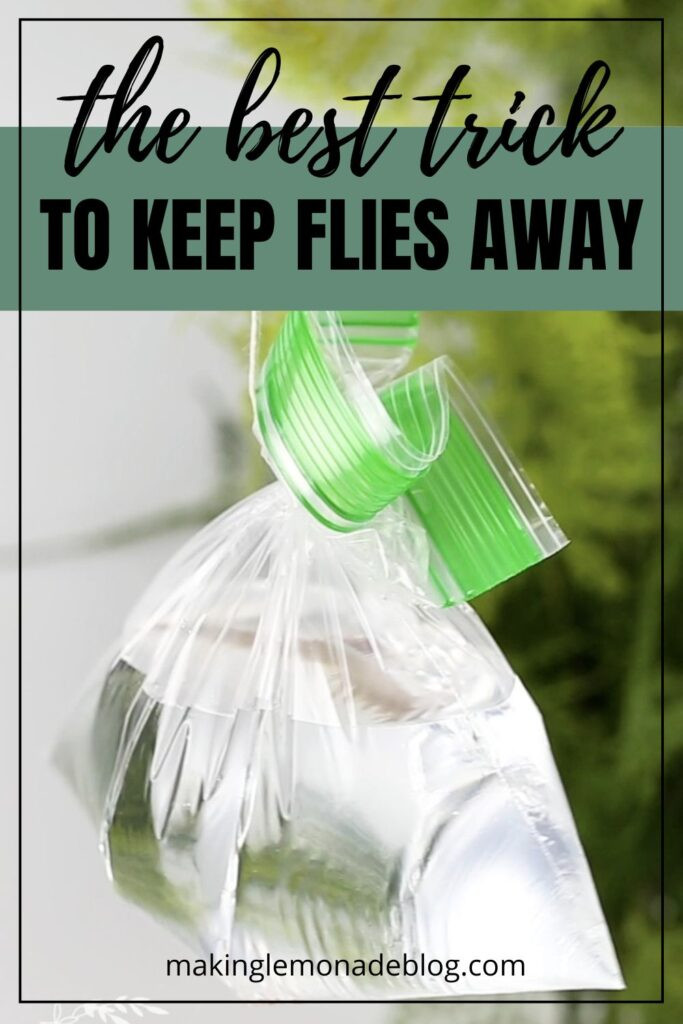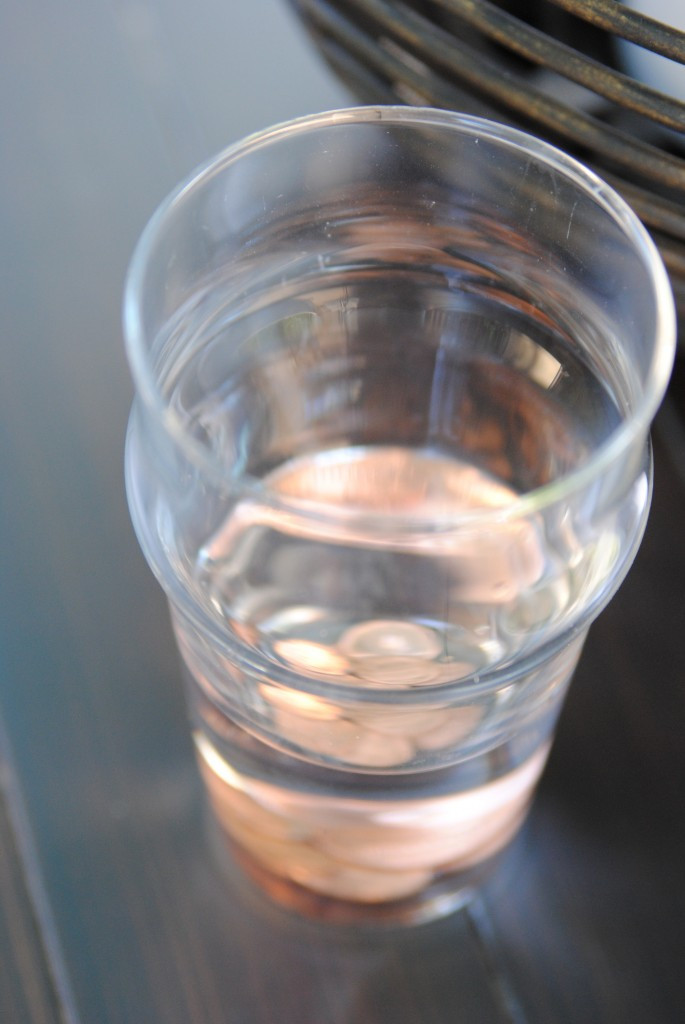Keeping flies away outdoors is crucial for enjoying your patio, garden, or any open-air space. Flyermedia.net offers a comprehensive guide with proven methods and expert tips to help you reclaim your outdoor areas from these unwelcome guests. From natural repellents to practical solutions, discover how to create a fly-free environment. For those seeking in-depth knowledge on pest control and maintaining a healthy outdoor environment, explore our resources on fly control strategies, natural fly repellents, and effective outdoor pest management techniques.
1. Understanding Why Flies are Attracted to Your Outdoor Space
Before diving into solutions, it’s essential to understand what attracts flies to your outdoor space in the first place. Understanding the factors that draw flies in can greatly assist in creating a targeted and effective fly control strategy.
1.1. Common Attractants for Flies Outdoors
Flies are opportunistic insects, and several factors can make your outdoor area an irresistible haven for them. These include:
- Food Sources: Flies are attracted to any source of food, including garbage, compost piles, pet waste, and spilled food or drinks.
- Moisture: Standing water, leaky pipes, and even damp soil can provide breeding grounds for flies.
- Shelter: Flies seek shelter from extreme weather conditions, making shaded areas, bushes, and cluttered spaces attractive.
- Odors: Strong odors, whether from decaying matter or even certain flowers, can draw flies from considerable distances.
1.2. The Role of Environment in Fly Infestation
The surrounding environment also plays a significant role in fly infestations. Factors like proximity to farms, waste disposal sites, or stagnant water bodies can increase the likelihood of fly problems. According to research from the University of Florida’s Entomology and Nematology Department, urban areas near agricultural land often experience higher fly populations due to the abundance of breeding sites.
2. Natural Fly Repellents: Harnessing the Power of Nature
For those seeking eco-friendly solutions, several natural repellents can effectively deter flies from your outdoor space. Using natural repellents is a safe and sustainable way to keep flies at bay without resorting to harsh chemicals.
2.1. Plants That Repel Flies
Certain plants possess natural compounds that flies find offensive. Incorporating these plants into your garden or patio can create a natural barrier against flies.
- Lavender: Its fragrant oils repel flies and other insects.
- Basil: A versatile herb that deters flies and mosquitoes.
- Mint: Flies dislike the strong scent of mint.
- Rosemary: A woody herb that repels various pests, including flies.
- Marigolds: These vibrant flowers contain pyrethrum, an insecticidal compound.
 Lavender flowers in a garden setting, used as a natural fly repellent.
Lavender flowers in a garden setting, used as a natural fly repellent.
2.2. Essential Oils for Fly Control
Essential oils derived from plants can also be used to repel flies. Dilute a few drops of essential oil in water and spray it around your outdoor area or use a diffuser.
- Peppermint Oil: Effective at repelling flies and mosquitoes.
- Eucalyptus Oil: Known for its insect-repelling properties.
- Citronella Oil: A common ingredient in insect repellents.
- Lemongrass Oil: Repels flies and other insects with its citrusy scent.
- Clove Oil: A strong-smelling oil that deters flies.
2.3. DIY Natural Fly Sprays
Creating your own natural fly sprays is an economical and environmentally friendly way to manage fly populations. These sprays typically combine essential oils with water and other natural ingredients.
- Vinegar Spray: Mix equal parts water and white vinegar in a spray bottle. Vinegar’s strong smell repels flies.
- Citrus Peel Spray: Boil citrus peels in water, let it cool, and strain the liquid into a spray bottle. Citrus oils are natural fly repellents.
- Herbal Infusion Spray: Infuse water with herbs like basil, mint, and lavender, then strain and spray.
3. The Penny and Water Trick: Fact or Fiction?
One popular home remedy for repelling flies involves filling a clear plastic bag or glass with water and adding pennies. But does this trick actually work?
3.1. How the Penny Trick Supposedly Works
The theory behind the penny trick is that the combination of water and pennies creates a visual distortion that confuses flies. Some believe that the flies perceive the reflective surface as a large body of water, which they avoid due to the risk of drowning. Others suggest that the pennies resemble the compound eyes of a larger insect, scaring the flies away.
3.2. Scientific Evidence (or Lack Thereof)
While anecdotal evidence suggests that the penny trick works for some people, there is limited scientific research to support these claims. Most studies on fly behavior focus on attractants rather than repellents. According to entomologist Dr. Jerome Goddard at Mississippi State University Extension, the effectiveness of the penny trick is likely due to other factors, such as the movement of the water or the presence of a clear object that disrupts the flies’ flight patterns.
3.3. Practical Ways to Implement the Penny Trick
If you’re curious to try the penny trick, here’s how to implement it:
-
Method 1: Pennies in a Glass of Water
- Fill a clear glass with water.
- Add 4-5 pennies to the bottom of the glass.
- Place the glasses around your outdoor eating or seating area.
-
Method 2: Water Bag with Pennies
- Fill a clear plastic bag (sandwich or quart-sized) with water.
- Add 4-5 pennies to the bag.
- Seal the bag tightly and hang it in your outdoor area.
 A close-up of pennies in a glass of water, purportedly repelling flies.
A close-up of pennies in a glass of water, purportedly repelling flies.
4. Maintaining a Clean Outdoor Environment: Your First Line of Defense
One of the most effective ways to control flies is to maintain a clean and sanitary outdoor environment. Eliminating food sources and breeding sites can significantly reduce fly populations.
4.1. Proper Waste Management
- Garbage Bins: Ensure garbage bins have tight-fitting lids and are emptied regularly.
- Compost Piles: Keep compost piles away from your main outdoor area and turn them frequently to reduce odors.
- Pet Waste: Clean up pet waste promptly to prevent flies from breeding.
4.2. Eliminating Standing Water
- Drainage: Ensure proper drainage in your yard to prevent water from accumulating.
- Gutters: Clean gutters regularly to remove debris that can trap water.
- Bird Baths: Change the water in bird baths frequently to prevent mosquito and fly breeding.
4.3. Keeping Outdoor Surfaces Clean
- Spills: Clean up food and drink spills immediately.
- Grills: Clean your grill after each use to remove food residue.
- Tables and Chairs: Wipe down outdoor furniture regularly to remove crumbs and sticky substances.
5. Fly Traps: A Targeted Approach to Fly Control
Fly traps can be an effective way to reduce fly populations in specific areas. There are various types of fly traps available, each with its own advantages and disadvantages.
5.1. Types of Fly Traps
- Sticky Traps: These traps use a sticky surface to capture flies. They are non-toxic and easy to use.
- Bait Traps: These traps use a bait to lure flies into a container, where they become trapped and drown.
- Electronic Traps: These traps use ultraviolet light to attract flies, then electrocute them.
5.2. Placement and Maintenance of Fly Traps
- Placement: Place fly traps in areas where flies are most active, such as near garbage bins, compost piles, or outdoor eating areas.
- Maintenance: Check and empty fly traps regularly. Replace sticky traps when they become full. Refill bait traps with fresh bait as needed.
6. Professional Pest Control Services: When to Call in the Experts
In some cases, fly infestations may be too severe to handle with DIY methods. If you’ve tried various strategies and are still struggling with a fly problem, it may be time to call in professional pest control services.
6.1. Identifying a Severe Fly Infestation
- Large Fly Populations: If you consistently see large numbers of flies in your outdoor area.
- Persistent Breeding: If you can’t eliminate the source of fly breeding.
- Health Concerns: If flies are posing a health risk to you or your family.
6.2. Benefits of Professional Pest Control
- Expertise: Pest control professionals have the knowledge and experience to identify the source of fly infestations and develop effective treatment plans.
- Specialized Equipment: They have access to specialized equipment and products that are not available to the general public.
- Long-Term Solutions: They can provide long-term solutions to prevent future fly infestations.
6.3. Finding a Reputable Pest Control Service
- Licensing and Certification: Ensure the pest control service is licensed and certified by relevant authorities.
- Experience: Look for a company with a proven track record of success in fly control.
- References: Ask for references from previous clients.
- Reviews: Check online reviews to get an idea of the company’s reputation.
7. Addressing Specific Fly Species
Different fly species may require different control strategies. Understanding the common fly species in your area can help you tailor your approach.
7.1. Common Outdoor Fly Species
- House Flies (Musca domestica): These are the most common flies found around homes. They are attracted to garbage, food waste, and animal feces.
- Blow Flies (Calliphoridae): These flies are often metallic blue or green and are attracted to decaying meat and other organic matter.
- Fruit Flies (Drosophilidae): These small flies are attracted to overripe fruit, fermenting liquids, and other sugary substances.
- Stable Flies (Stomoxys calcitrans): These flies bite animals and humans and are often found near livestock.
7.2. Species-Specific Control Strategies
- House Flies: Focus on eliminating food sources and breeding sites. Use garbage bins with tight-fitting lids, clean up pet waste promptly, and keep outdoor surfaces clean.
- Blow Flies: Remove any decaying meat or organic matter from your property. Use fly traps baited with meat scraps.
- Fruit Flies: Remove overripe fruit and other sugary substances. Use fruit fly traps baited with vinegar or wine.
- Stable Flies: Control breeding sites by managing manure and other organic matter. Use fly traps and repellents to protect animals and humans.
8. Integrating Fly Control with Other Pest Management Strategies
Fly control should be part of an integrated pest management (IPM) strategy that addresses all types of pests in your outdoor area. IPM focuses on preventing pest problems through a combination of methods.
8.1. Key Principles of Integrated Pest Management
- Prevention: Take steps to prevent pest problems before they occur, such as maintaining a clean environment and eliminating food sources and breeding sites.
- Monitoring: Regularly monitor your outdoor area for signs of pests.
- Identification: Identify the specific pests that are causing problems.
- Action Thresholds: Determine when pest control measures are necessary based on the level of infestation.
- Control Methods: Use a combination of control methods, including cultural practices, biological control, and chemical control (as a last resort).
- Evaluation: Evaluate the effectiveness of your pest control efforts and make adjustments as needed.
8.2. Combining Fly Control with Mosquito and Ant Control
- Mosquito Control: Eliminate standing water to prevent mosquito breeding. Use mosquito repellents and traps.
- Ant Control: Eliminate food sources for ants, such as crumbs and spills. Use ant baits and insecticides as needed.
- General Pest Control: Maintain a clean outdoor environment, trim vegetation, and seal cracks and crevices in your home’s foundation.
9. Long-Term Prevention: Creating a Fly-Resistant Outdoor Space
The key to long-term fly control is to create an outdoor space that is less attractive to flies. This involves implementing preventive measures and maintaining good sanitation practices.
9.1. Landscaping for Fly Control
- Plant Selection: Choose plants that are less attractive to flies. Avoid plants with strong odors or those that produce a lot of nectar.
- Pruning: Prune trees and shrubs regularly to reduce shaded areas where flies can shelter.
- Ground Cover: Use gravel or mulch instead of grass in areas where flies are common.
9.2. Structural Modifications
- Screens: Install screens on windows and doors to prevent flies from entering your home.
- Sealing Cracks: Seal cracks and crevices in your home’s foundation to prevent flies from nesting.
- Door Sweeps: Install door sweeps to prevent flies from entering under doors.
9.3. Educating Yourself and Others
- Stay Informed: Stay up-to-date on the latest fly control methods and best practices.
- Share Information: Share your knowledge with friends, family, and neighbors to help them prevent fly problems.
- Community Involvement: Participate in community efforts to control flies and other pests.
10. Addressing Common Misconceptions About Fly Control
There are many misconceptions about fly control that can lead to ineffective strategies. It’s important to separate fact from fiction.
10.1. Common Myths About Fly Control
- Myth: Flies are only a problem in dirty environments.
- Fact: While flies are attracted to filth, they can also be found in clean environments where they find food and water.
- Myth: Fly traps are a complete solution to fly problems.
- Fact: Fly traps can help reduce fly populations, but they are not a substitute for good sanitation practices.
- Myth: All insecticides are equally effective against flies.
- Fact: Different insecticides have different modes of action and may be more effective against certain fly species.
- Myth: Once you get rid of flies, they won’t come back.
- Fact: Flies can return if you don’t address the underlying causes of the infestation.
10.2. The Importance of Accurate Information
- Reliable Sources: Rely on accurate information from reputable sources, such as universities, government agencies, and pest control professionals.
- Critical Thinking: Use critical thinking skills to evaluate fly control claims and strategies.
- Scientific Evidence: Look for scientific evidence to support fly control recommendations.
FAQ: What Keeps Flies Away Outdoors?
1. What are the most effective natural ways to keep flies away outdoors?
The most effective natural ways include using plants like lavender, basil, and mint; applying essential oils such as peppermint and eucalyptus; and creating DIY sprays with vinegar or citrus peels.
2. Does the penny and water trick really work to repel flies?
While anecdotal evidence exists, scientific support is limited. The visual distortion or movement of the water may deter flies, but it’s not a guaranteed solution.
3. How can I prevent flies from being attracted to my patio?
Maintain a clean environment by promptly cleaning up food spills, securing garbage bins, eliminating standing water, and regularly cleaning your grill.
4. What essential oils are best for repelling flies outdoors?
Peppermint, eucalyptus, citronella, lemongrass, and clove oils are effective due to their strong scents that flies dislike.
5. Are fly traps a good solution for outdoor fly control?
Yes, fly traps can be effective when placed strategically near garbage bins or compost piles, but they should be used in conjunction with other sanitation practices.
6. When should I consider calling a professional pest control service for fly control?
If you have a severe fly infestation, persistent breeding, or health concerns, it’s best to consult a professional pest control service for effective and long-term solutions.
7. What role does landscaping play in keeping flies away outdoors?
Choosing less attractive plants, pruning regularly, and using gravel or mulch can reduce areas where flies can shelter and breed.
8. How do I eliminate standing water to prevent fly breeding?
Ensure proper drainage, clean gutters regularly, and change water in bird baths frequently to eliminate potential breeding sites.
9. Can specific fly species require different control strategies?
Yes, different species such as house flies, blow flies, and fruit flies are attracted to different things and may require tailored approaches.
10. What are some common misconceptions about fly control?
Common myths include believing flies only appear in dirty environments and that fly traps are a complete solution. Accurate information and integrated strategies are key.
Are you struggling to keep flies away from your outdoor events? Do you need reliable information on flight training, aviation news, or career opportunities? Visit flyermedia.net for expert insights and solutions. Our comprehensive resources cover everything from pest control strategies to career advancement in the aviation industry. For immediate assistance or inquiries, contact us at Address: 600 S Clyde Morris Blvd, Daytona Beach, FL 32114, United States, Phone: +1 (386) 226-6000, or visit our Website: flyermedia.net. Let flyermedia.net be your trusted source for all things aviation and outdoor living.
